I am performing an SVD image compression- SVD allows you to approximate the actual image matrix by a lower rank matrix of rank v, thus achieving compression(link).
Here's the pseudo-code:
load image_mat % load image as a matrix
[U, S, V] = SVD(image_mat) % U and V are square, S is diagonal (mxn)
set S(v+1:end,:) = 0; set S(:,v+1:end) = 0; % set all values after rank v as zero
new_image = U*S*V';
The problem I am facing is this: Once I perform the lower rank approximation, the old and the new matrix are of the same size (m x n). Both images contain the same number of pixels (since U and V do not change.) Thus, the file size does not (read: CANNOT!) change. However, I see the image quality changing drastically for different values of v.
What am I missing?
EDIT: Further explanation:
Below is the result of the SVD decompression, by rank reduction:
 My question is, if the number of pixels in both the pictures remains the same, how would I get a file size reduction (decompression) ? Except the fact that the matrix of singular values (S) is changing in size, everything else pretty much remains the same (despite the obvious drop in image quality), i.e the new matrix constructed after decompression has the same size 512 x 512 as the original image.
My question is, if the number of pixels in both the pictures remains the same, how would I get a file size reduction (decompression) ? Except the fact that the matrix of singular values (S) is changing in size, everything else pretty much remains the same (despite the obvious drop in image quality), i.e the new matrix constructed after decompression has the same size 512 x 512 as the original image.